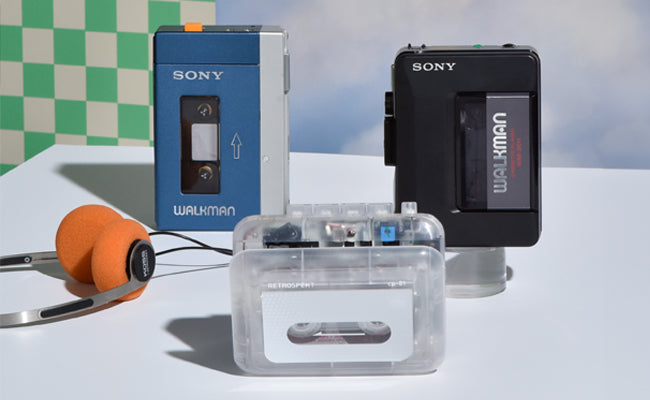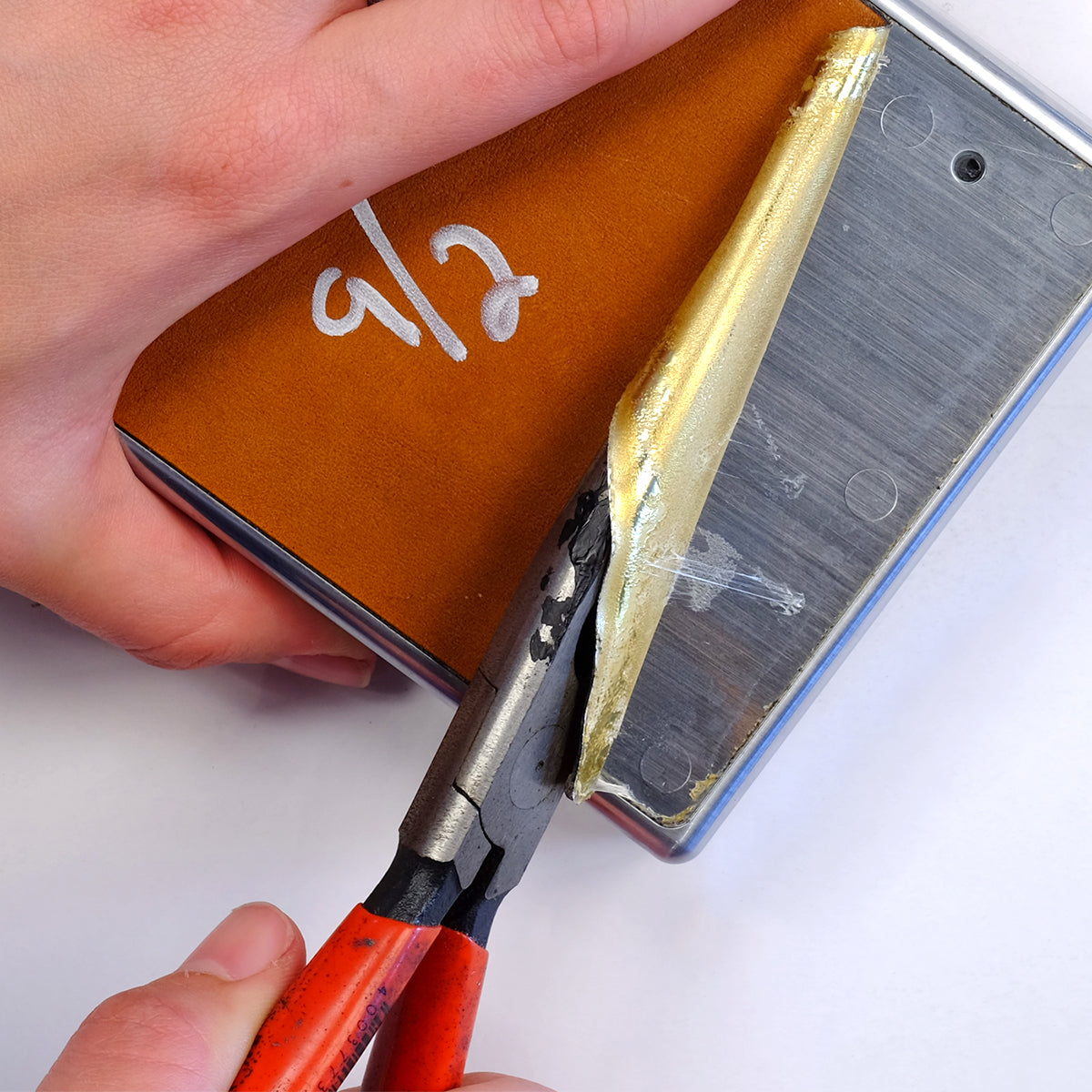Why do I see slanted lines when looking through the viewfinder of my SX-70?

If you’re asking that question, you’re not alone. Every so often someone will ask: “What’s up with the slanted lines in the viewfinder when I focus my SX-70? Are those supposed to be there? Is that something that should have been cleaned off or fixed on this refurbished camera?”
It’s a valid question, and if you don’t know what you’re looking at it’s easy to mistake it for, well, a mistake. The short answer is those lines are an inherent result of use, and they won't show up on your final picture. As even the youngest folding Polaroid camera is several decades old at this point, it’s likely your camera had a whole life before it ended up with you, and those marks are proof of that history.
The Fresnel
First, where in the camera are these lines? You see them through the viewfinder, but where are they inside the camera? The lines are physically located on the fresnel. What is a fresnel? Let’s take the answer directly from the SX-70 service manual:
“The special Fresnel (pronounced “freh-nell”) screen is employed to enhance the viewing image by increasing the brightness and definition. If a matte white surface were substituted for the fresnel screen, an image would still be visible. However, the light rays striking nearest the corners of the screen meet the screen at a more oblique angle than the rays striking near the center. At this greater angle, a larger percentage of the light is dispersed and less light is returned to the viewer. Thus, on a matte-screen image the corners would appear darker than the center. The Fresnel screen is designed to overcome this problem.
The screen itself is a sheet of plastic upon which are impressed a series of concentric rings much like the grooves pressed into a phonograph record. Instead of having a vee shape, however, the grooves in the Fresnel screen form a saw-tooth with a tooth angle increasing slightly with each successive groove in such a manner as to complement the decreasing angle of the light ray. The saw-tooth flattens out completely at the exact optical center of the screen. In the SX-70 camera, the optical center is not the geometrical center of the screen.
The surface of the screen is silvered to provide optimum reflectance. The result is a brilliant viewing image evenly illuminated from corner to corner. In summary, the Fresnel satisfies three conditions:
- It enhances focusing by distributing light rays evenly across the entire viewing area.
- It guarantees proper focusing by nature of its acting as a ground glass - thus ensuring that the subject is in focus when the eye sees the image in focus on the screen.
- It acts as a reflecting surface to permit the eye to see the image through the viewfinder optics.”
So basically the fresnel is there to collect light which allows you to preview the image you’re composing. It’s for viewing only and doesn’t have anything to do with the exposure of the image.
When the SX-70 cycles to take a picture, spring pressure causes the fresnel surface to move up out of the way. When this happens, the fresnel surface hits the viewing mirror with quite a bit of force. The lines in question are the result of the fresnel focusing surface coming into contact with the viewing mirror. This action is the characteristic “ffwompp” sound the SX-70 makes when you take a photograph.


Over time, this interaction between the two surfaces leaves a permanent impression on the fresnel surface. If we look inside a camera, the lines on a well-used fresnel line up perfectly with the edges of the viewing mirror. It creates an unavoidable point of contact. Once these impressions are made on the fresnel surface, they are there forever. They cannot be cleaned off or buffed out (though we can certainly clean any extra dirt or grime out to lessen their visual impact to some degree). Even if it was possible (but isn't, due to scarcity) to replace the fresnel with a new or unused part, the lines would ultimately reappear with use. These slight lines are the honest wear of a vintage camera functioning as designed.
Impact (or lack thereof) on your pictures
Alright, alright, that’s how they got there, but what you really want to know is what it’ll do to your final picture. You’ll be happy to know that these lines will have absolutely no impact on your final image. The affected surface is only used for focusing the camera. The fresnel moves out of the way when you push the shutter button, creating a clear path to expose the film. In that sense, the action that creates the lines is also the action that prevents them from showing up in your finished photo.

By Bryan Rieth
Head of Repairs | Retrospekt
Bryan learned how to repair instant cameras directly from lifelong Polaroid technicians, imported from the Netherlands. He can resuscitate even the most difficult camera or cassette player. It’s quite possible he’s repaired more TPS-L2s than anyone in the world.









